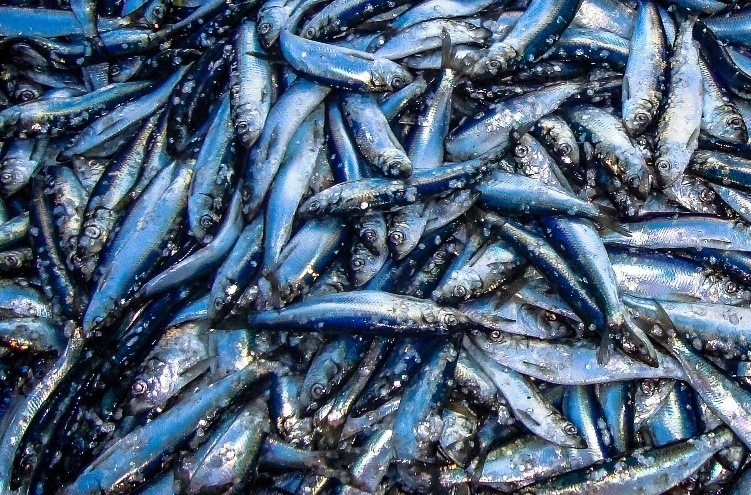October 27, 2025

The EU, Norway and UK face a pivotal moment for the management of a key Northeast Atlantic forage fish
North Sea herring, a small pelagic forage fish, has long been a cornerstone of European fisheries and is vital to both the marine ecosystem and the coastal economies that depend on it. But, like other internationally-shared fisheries in the Northeast Atlantic such as those for mackerel, blue whiting and Atlanto-Scandian herring, the North Sea herring fishery also has had challenging periods in its management, including historic periods of overfishing. However, an upcoming negotiation could mark a monumental shift in how North Sea herring and other key fisheries are managed, both in terms of sustainability and with regard to their important role in the marine ecosystem.
Fisheries managers can adopt a new long-term management strategy (LTMS) for North Sea herring in two planned rounds of trilateral meetings among the European Union, Norway and the United Kingdom, scheduled in the weeks of 27 October and 17 November. This LTMS – the regional term used in the Northeast Atlantic for harvest strategy or management procedure – would include a harvest control rule (HCR) to set annual catch limits. If followed, these limits could lead to sustainable management for many years to come. The strategy would set clear benchmarks and rules for future changes in allowable catch while recognizing herring’s crucial role in the marine ecosystem. This plan would ensure that the fishery not only meets long-term human demand but also accommodates the needs of key predators such as seabirds.
State-of-the-art science backs the North Sea herring management proposal
Nearly two years of collaborative scientific work by the International Council for the Exploration of the Sea (ICES) underpins the development of a North Sea herring harvest strategy, work that has been scientifically tested using a process called management strategy evaluation (MSE). This tool tests a variety of HCRs using computer simulations to find out which ones can best achieve the desired long-term sustainability and precautionary objectives for the fishery while providing predictable and high annual catches for the fishing sector, markets and consumers.
At the request of the three negotiating Parties, an ICES Workshop on Management Strategy Evaluation for North Sea Herring convened in early 2024 to conduct an MSE to test the ability of several harvest strategies in achieving various management objectives. The MSE process covered a range of ecological scenarios and reflected key scientific and management uncertainties to help determine the best possible management approach.
The MSE tested HCRs under a plausible range of natural conditions. These incorporated biological parameters for the species based on an ecosystem model that included a spectrum of predator-prey dynamics and examined scenarios that reflect natural variability and potential environmental influences on the productivity of herring. By integrating these ecological considerations, ICES scientists provided informed evaluation and advice to the Parties on a management framework that acknowledges herring as part of a dynamic ecosystem.
A balanced harvest strategy could help secure North Sea herring’s sustainability
With several science-based options now on the table, managers need to adopt their preferred harvest strategy and use it to set a total allowable catch (TAC) limit for 2026. One of the options, known as Management Strategy 3 (MS3), has gained traction among the parties. And while it isn’t the most precautionary option available, it does offer a good balance of stock health, total allowable catch and acceptable levels of stability and risk. If implemented successfully, it would help to ensure future sustainability.
Over the summer, the Parties jointly asked ICES to reissue their annual catch advice for herring based on the particular management parameters of MS3. But the coming weeks are pivotal. By adopting this harvest strategy, including it in their publicly available Agreed Record of negotiations and using it to set their future catch limits, managers can lock in a transparent, scientific and rule-based framework that provides predictability and stability for operators in the region and takes ecological considerations into account.
But adopting the harvest strategy isn’t enough. To really succeed, the Parties should also develop what is known as an Exceptional Circumstances Protocol. This would set clear parameters for whether and when the LTMS should be re-evaluated while allowing adaptability in cases of changes on the water.
The North Sea herring MSE process shows what’s possible when scientists, managers and stakeholders work together. Now, with a clear evidence base and consensus within reach, managers have a rare opportunity to set a new management precedent and secure the future of the iconic North Sea herring fishery. They can then chart a path forward for other important Northeast Atlantic fisheries such as mackerel and Atlanto-Scandian herring.
Ashley Wilson works on The Pew Charitable Trusts’ international fisheries project.